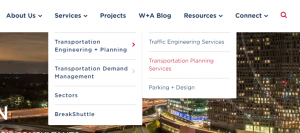— July 6, 2017

Whether you’ve completed a project a hundred times before or you’re faced with a new challenge, having some kind of formal project request form prevents the whole operation descending into a game of broken telephone and wasted resources.
No matter how good your team’s discipline, if all they have to go on when you request a project is a vague message and their memory of the requirements, sooner or later you’re going to have a problem. Either a project will be started which won’t be worth your time or your instructions will be lost in the trickle down to those taking action.
‘Whilst on manoeuvers, a brigadier commanding a certain brigade stationed in Aldershot passed the word to the nearest colonel to him:
“Enemy advancing from the left flank. Send reinforcements.”
By the time it reached the end of the right flank the message was received:
“Enemy advancing with ham-shanks. Send three and fourpence!”’ – Garson O’Tool, relaying a real-world instance of broken telephone from 1914

Even if the overall goal doesn’t become garbled before reaching the front lines, the team receiving the project request have little to no chance to see the big picture, distancing them from the benefits that the project could bring.
So, if you’d rather work on your most important projects without wasting time and resources, keep reading. It’s time to create a business system to organize your projects into official, standardized requests that show exactly what the project is, who will be working on it, when it’s due, and what resources are assigned to it. It’s time to get a formal project request form set up.
What is a project request form?
Project request forms lay out the core details of a project, allowing everyone involved to see what it is, why it’s worth completing, how long it should take, what resources are dedicated to it, and so on. If you need to ask (or have been asked) for something beyond borrowing a pen, you’ll stand to gain by making an official request form to make sure that nothing is lost or forgotten.
It’s also a great way to stop mixed messages trickling down through your company.

Think of request forms as project proposals, but instead of pitching a project to your manager, CEO, or stakeholders, they are the ones requesting the project to be completed. Proposals ask “can we do this?” whereas request forms tell you “we need to do this”.
This lets managers define exactly what a project should be, how to achieve it, and show the predicted value to everyone working on it, motivating them to get the work done. Everyone knows what’s involved, and so the project can be reliably (and confidently) funded and completed.
In other words, every project request form should contain enough information to convey the entire project to the teams that will work on it, and also to get started without any confusion. It’s inevitable that you’ll need to share information and updates as things progress, but at the outset this should provide everything everyone needs to make some headway.
Why are they important?
Project request forms help both the people requesting the project and those who will work on it by bringing clarity to both sides.
The team working on the project will be able to start as soon as it’s approved rather than wasting time with extra meetings, chats in Slack, and general confusion. It’s one of the best ways you can clearly and concisely describe a project and how to start it.
This clarity, along with the general information in the request form (such as the expected finish date, scope, and budget), also helps the progress of the project to be planned out in advance and smaller deadlines set, meaning that it’s much more likely to stay on track.
As for the people who submit the project request form, the formal document helps to make sure that any projects requested have a realistic scope and are actually worth targeting. The standardized format makes sure that every angle is considered, and the cost weighed against the predicted gains in black and white, making the worth of the project and its deliverables crystal clear.

Letting the team who will be responsible for the project see this will also give them a chance to voice any concerns about the project before any time or resources are spent on it. If something doesn’t add up or seems like a waste of time then the matter can be discussed by everyone involved, and an informed decision made about whether to continue with the project, alter the request form, or scrap it and focus on something else instead.
How to create a project request form
Creating a serviceable project request form isn’t difficult. Writing a form which will be consistently used and provide all of the information your team needs, along with the motivation to stay on schedule and produce high quality results, is another matter entirely.
Thankfully, there are a couple of simple principles you can follow to make sure that you’re both creating an effective request form without making things unnecessarily tedious and dull. Mainly, you need to:
- Decide on a consistent format
- Pick a project to request
- Cover the basic details in your request
- Keep things simple
- Make your deadlines and dedicated resources reasonable
- Have a set submission or reminder system
Let’s dive into each of these in a little more detail.
Decide on a consistent format
Much like when learning how to write a procedure, you first need to decide on a set format which your project request form will follow. This means that projects can be compared and contrasted if you’re ever unsure which to request of a team; the single format makes it easy to see the investment and projected value of all of them.
Having a digital format (or at least a digital copy) for the form is also a must, since this will provide a go-to resource which can both be easily referenced later on in the project’s development and can be far more easily shared between team members. Not to mention that if the request needs revising, a single shared digital copy (like the template from earlier in this post) is much easier to keep up-to-date than having to print off and replace all physical instances.
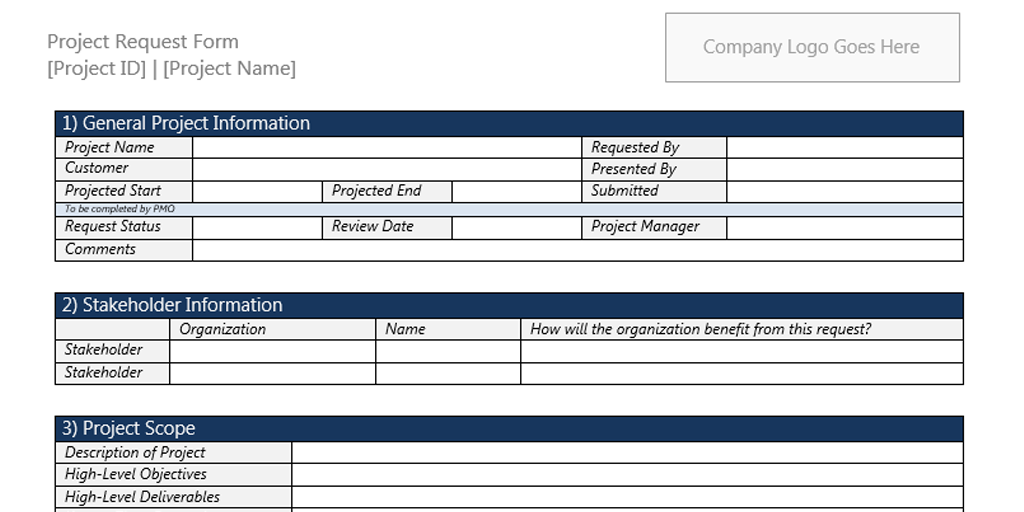
There’s no hard-and-fast rule for what your format needs to be, but as long as it lets you include all relevant details, can be easily shared and updated, and is unlikely to get deleted or lost, you should be good to go.
Pick a project
You can’t write a project request form until you actually pick a project. Here it pays to have some sort of prior analysis as to the value of potential projects before you start, since that will be your biggest indicator of what will be worth working on first.
If in doubt, have a meeting with whoever will be involved in the project and discuss the time and resources it will take compared to the benefits you’ll receive and other information such as any time sensitive elements. If you have one which is important, pressing, will give a large benefit to your business and won’t take too much to achieve, that’s the project you should be requesting first.
Cover the basic details
Now it’s time to record the basic details of your project in the request form. Although these will change slightly depending on the nature and size of the project, along with the teams involved and the size of your company, the basic questions you need to answer are as follows:
- What is the project?
- Why is it important?
- What predicted benefits will this bring?
- Where will it be carried out?
- Who will work on it?
- How will it be accomplished?
- When will it be completed by?
- What is required to complete it?
The key here is making sure that you convey enough to let everyone get on with the project while convincing them of the benefits that it will bring. If your team understands the importance of their tasks (eg, in relation to the rest of the company or even their own team) they’re more likely to get the project completed on time and to a high quality.
However, that doesn’t mean that you’ve got license to waffle on for pages…
Keep it simple
The kiss of death for any documented process, method, or request is to make it so overly detailed that the person reading it ignores it entirely. People don’t want to be told every in-and-out of what they have to do – they just want to get the work done and out of the way.
As such, if you don’t keep your request form simple by including only the high-level overview of the project, the form will become so long that everyone using it will inevitably cut corners. Instead, put in everything they need to know to start making progress, but don’t tell them what they already know.
Keep it simple, keep it readable, and above all else, keep it useful.
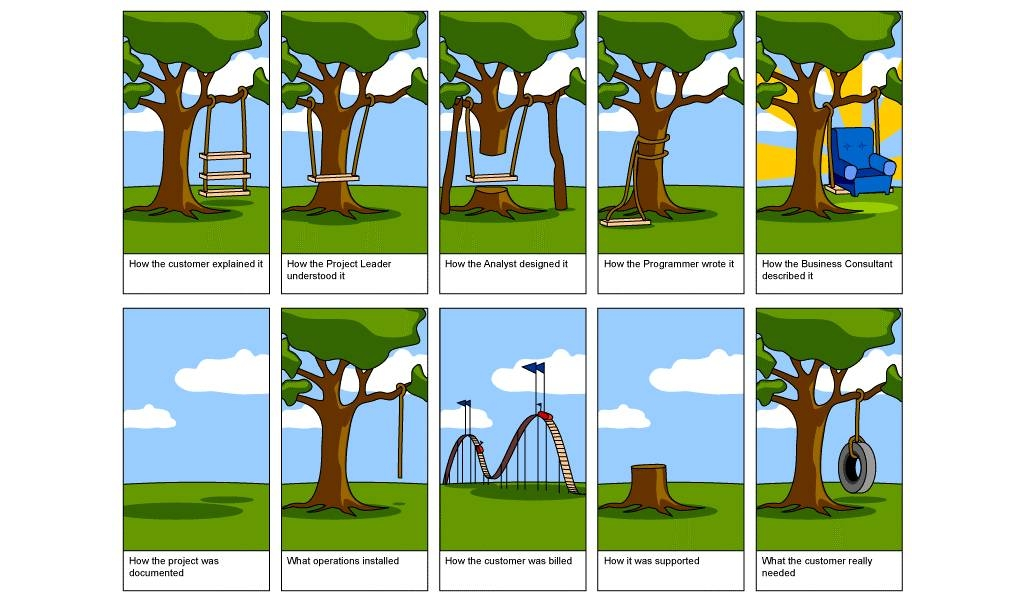
Make deadlines and resources reasonable
Deadlines straddle an incredibly fine line between pushing a team to burnout and cutting them slack to the point of lethargy, so it’s important to set ones which put on just enough pressure to encourage your team to work well. The same goes for the resources you assign to the project – you need to be reasonable instead of stingy or wasteful.
Once again, there’s no set formula for getting this balance right, but with deadlines try to aim for a figure which gives a little leeway to your teams, but not so much as to make them complacent. If needs be, encourage them to break up the project into smaller tasks with more rapid deadlines, as this will increase the urgency of the work and help the project to progress at a steady rate.
As for resources, everything is either something you need or investment vs reward. If it’s required, don’t go for a substitute. For example, if you need to hire a freelancer to handle work which you don’t have the talent for, make sure you hire a good freelancer instead of skimping on the price for the sake of it (you get what you pay for).
If there are optional resources which might improve the speed of the project or final quality, weigh them up against the investment they would take. For example, if a particular tool would make a task quicker and easier, weigh that benefit against the cost of the tool, along with any ongoing benefit from having access to it. If the tradeoff is worth it, get access and include the login details in the project request form.
Set up a submission or reminder system
Much like any documented process, it’s no good creating a request form if everyone’s only going to ignore it. So, you need to make sure that it’s visible and that the project (or rather the deadlines) won’t be forgotten. The way you’ll do this will largely depend on your project management app, but at the very least you and anyone else involved should be setting up alerts to remind you before the final deadline.
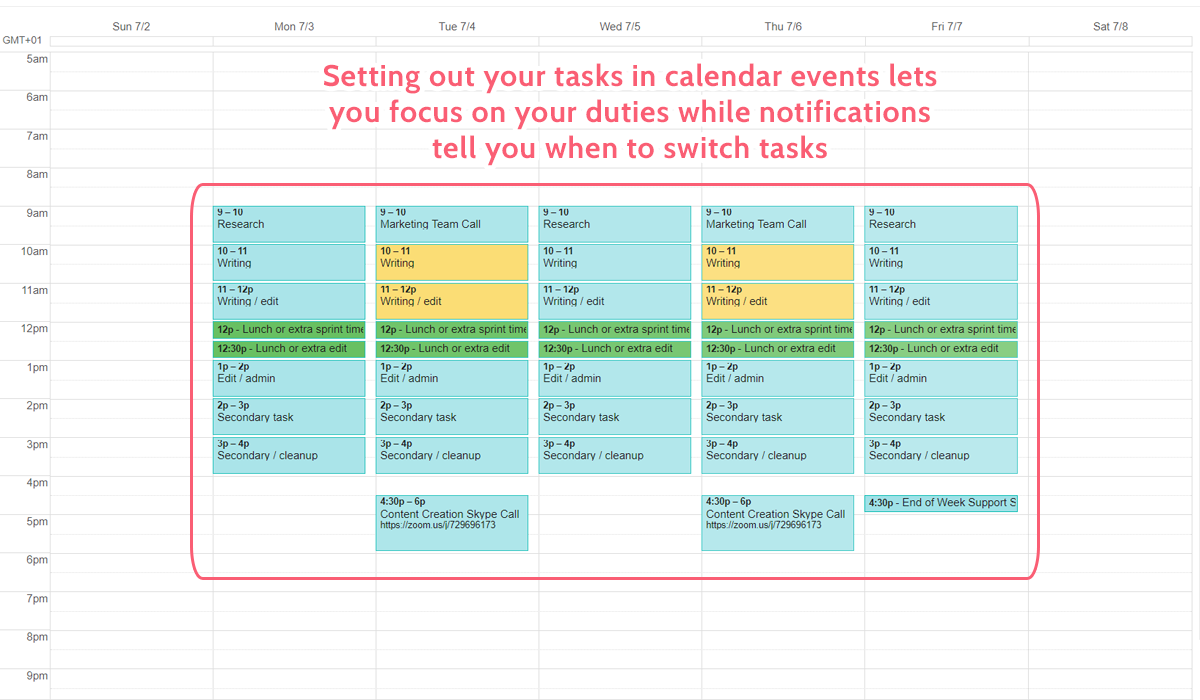
Let’s say that, like us here at Process Street, you’re using some kind of calendar system to manage your tasks (for us it’s Trello). In this case, you’d want to use the information in the project request form to split the project into deadlines across your calendar, culminating in the final date on the form.
Even if you’re using Google Calendar rather than a fancy paid app, you should be able to set up events and reminders for your various deadlines. The natural layout of the calendar will let you easily check on what tasks need doing, and when they need to be done by.
Automatically generate your perfect project request form
Much like any document with a standard format, you can automatically create your project request forms by using Zapier. Since the only thing that’s changing between each form is the information (and not the overall format), you can enter your project’s information into a template, questionnaire, or anything else that can store the relevant details, and then have Zapier ship it all into your standard form template.
Think of it like having an invoice generator – Zapier can detect information like what the project is and when it’s due from whatever you use to store it, and then create a formatted document by itself. You can even have it email you a link to the final product to save you having to go off and find it yourself.
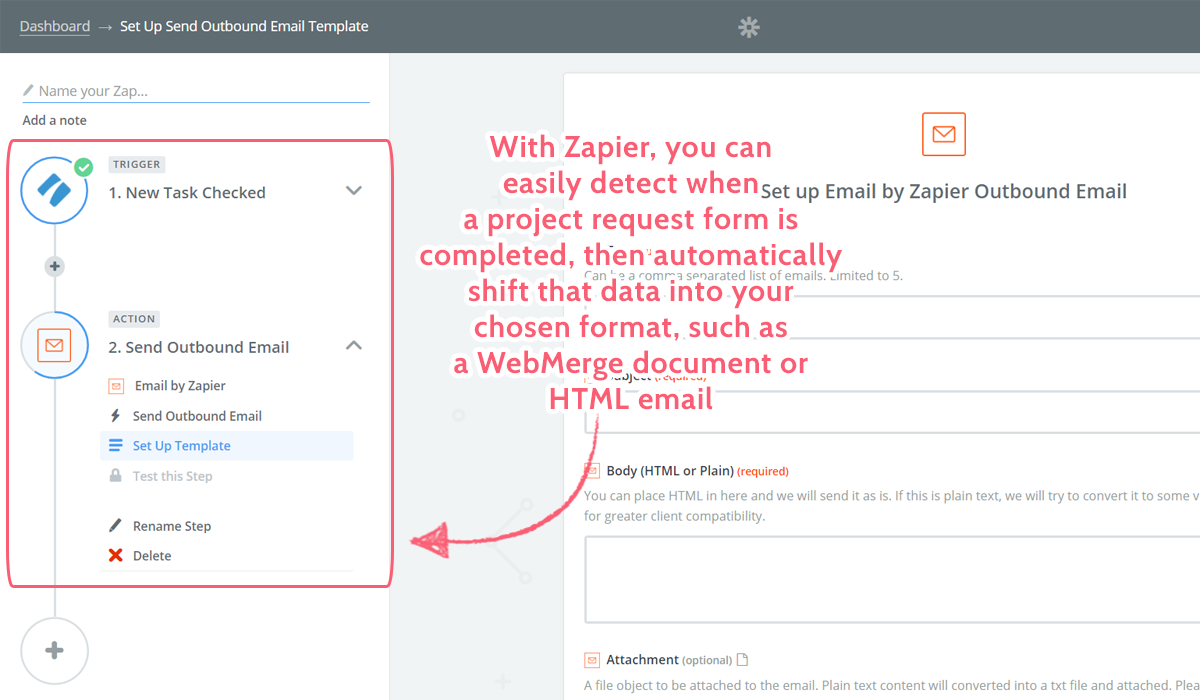
The easiest way to set up this process automation is to note down your project’s information using the project request form template supplied earlier in the post. You can then use a free account on Zapier to detect the information entered in Process Street and ship it to a form creation app of your choosing.
To learn more, check out our free business process automation ebook.
Sometimes the smallest changes can make a massive difference in your company. Having a formal project request form might not be the most glamorous aspect of your business, but it’s one of the vital ways your business can remain consistent and avoid wasting resources as you continue to grow.
Have any other project management tips? Let me know in the comments below.
Business & Finance Articles on Business 2 Community
(119)
Report Post





